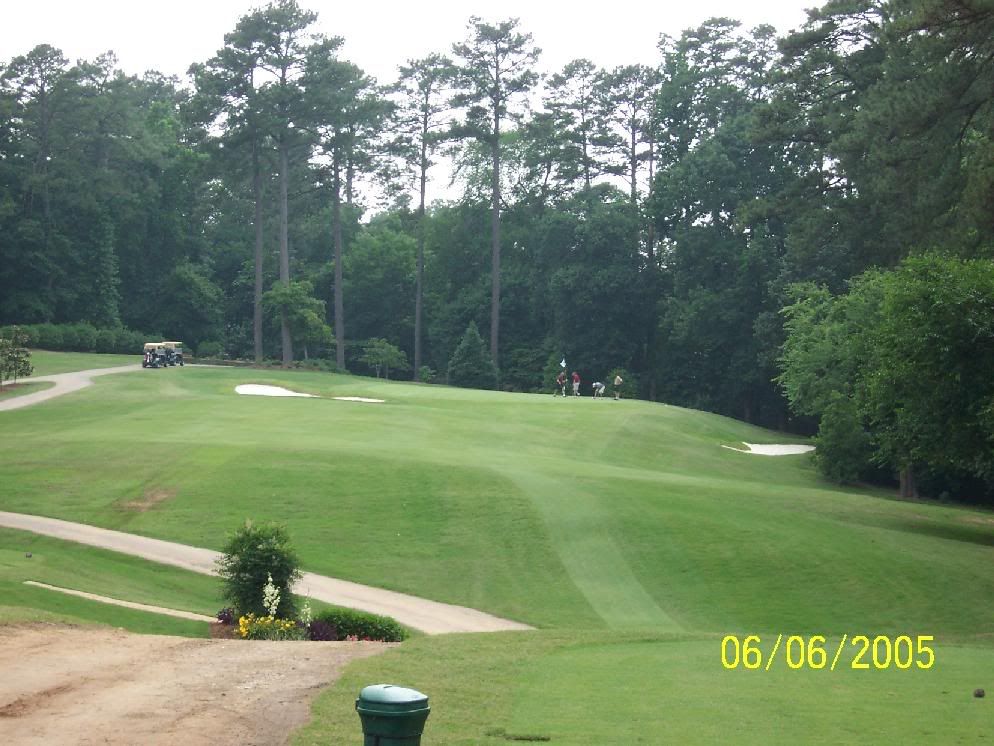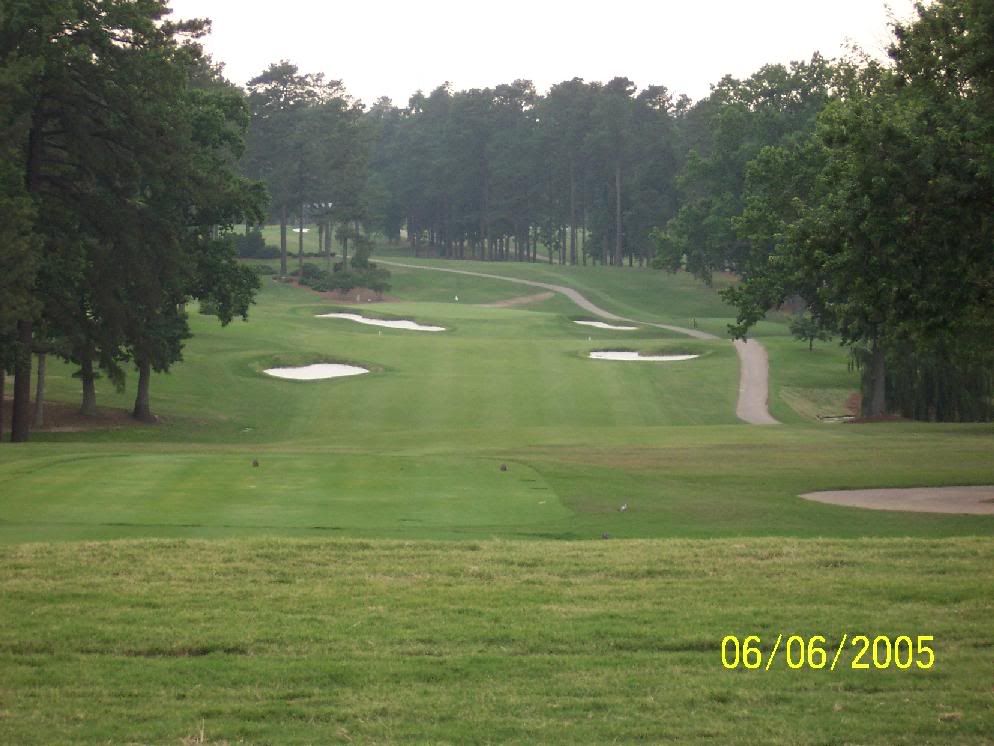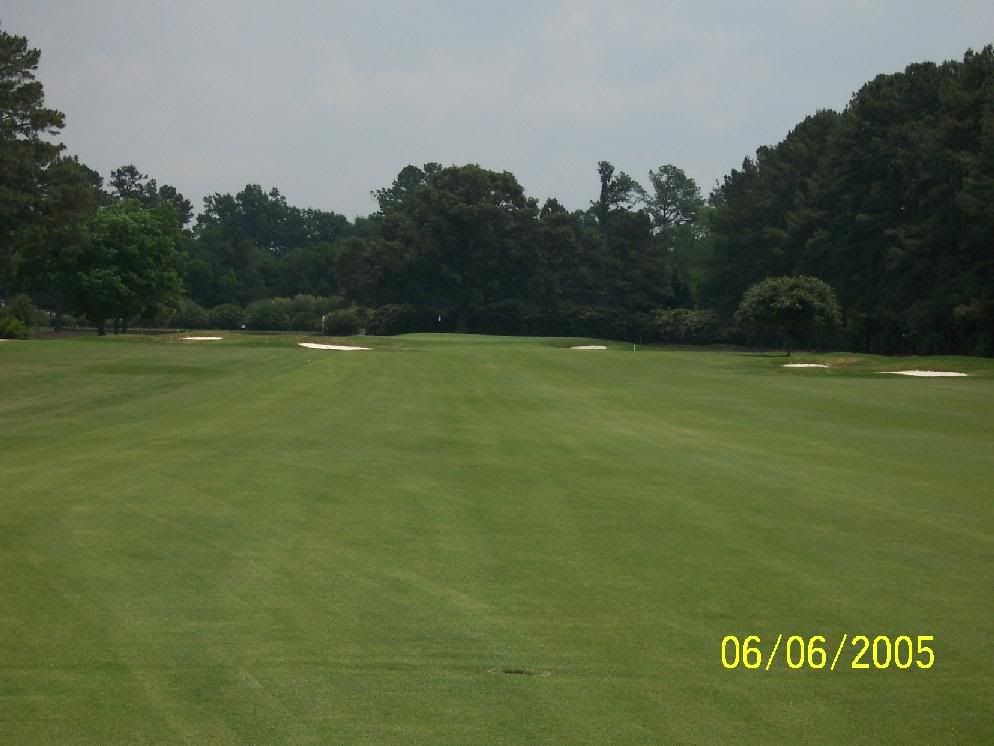With the recent restoration threads provoking the frustration
of those (perhaps lesser-known) arthitects who haven't been
given as many chances to show that they are just as
capable of doing a fine job, I figured now is as good a time as
any to post the pictures I took of Raleigh CC a few months
ago and some of the restoration work that Richard Mandell
has done there on this course, Ross' last design.
I'll be the first one to admit that a number of the pics I took
are not that good at showing off the work he did (I just took
pics when I remembered to - we were playing in an
outing/tournament), but a few have some decent examples.
I also may have some guestimated facts wrong on the work
done, so Mr. Mandell or someone else can correct me or add
more notes.
#1, par 5 late in the day:

from the drive landing zone, the 2nd shot is from a hanging lie
past the newly expanded bunker on the left:

#3 is one of the toughest holes on the course, almost 200
yards uphill to a much tilted green, with trouble right. The
bunker at right was put back and the left bunker moved
forward (toward the tee), when it used to be on the side of
the green.

#6 another tough par 3, with a tough green:

#9 short par 4 from behind, it has an array of bunkers down
the right side and up until about 30 yards short of the green:

#10 from the previous back tee. both fairway bunkers were added (back, I assume):

#10 from what will become the new back tee...

...which is steps from the back deck of the clubhouse, for all
to see (the putting green was here previously). The Coke
can is about where the tee would be:

#12 (par 5) the new back tee on the flattest hole on the
course, and also the longest. I'm pretty sure some trees
were taken out on the right off the tee.

#12 from the landing zone, the fairway bunkers in the
distance were expanded, and one was added on the each side.

#13 from the back tees, which shares a teeing ground with
#18 (this was taken while we were on #18).

#15 a short par 4, with a newly expanded fairway bunker ~50
yards short of the green:

#16 approach on this mid-long par 4, where the previous cart
path that cut across the fairway was removed:

#17 the only par 3 shorter than ~190-200 from the back
tees. I think all bunkers were expanded/reshaped, and one
was added:

Among the biggest changes at RCC was to the practice
facility. Some land was acquired (or rezoned, I don't know),
and now there is a massive practice facility:
The range and one putting green:

The huge teeing areas:

the chipping greens (w/bunker):

and the other, mammoth putting green:
